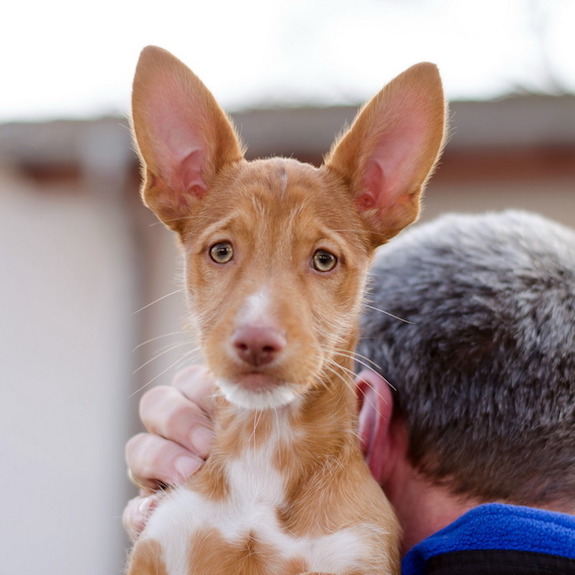
We begin a series on the many podenco breeds with a reminder that in Spanish, these hare-hunting breeds are called podencos (meaning “hound”), and in Portuguese, they are podengos. In either culture, they are warren hounds, dogs that go after hares and rabbits in the underground system of tunnels called warrens.
Meet the Podenco Maneto, a breed only recently (2004) recognized by the La Real Sociedad Canina de España as a race indigenous to the country. Sometimes known as the Ibizan Maneto, the Maneto’s name gives a clue as to its phenotype: In Spanish, maneto means an anomaly or defect in the hands or legs, and in this breed, it refers to the breed’s short legs. It is, in fact, a dwarf breed, and some have described it as a “Dachshund Podenco.”
Brevity of legs aside, this is still a clever sighthound typically paired with a team of dogs to detect prey. They are fast dogs, but not as fast at their longer legged counterparts. Still, a Maneto can work its way through dense brush and narrow canyons that defy larger dogs. Manetos are quiet and methodical workers who stay closer to the hunter than the other dogs, and bark only to alert that they’ve detected their prey. Sometimes, they are used to dispatch the prey.
The Maneto’s origins are in Andalusia in southern Spain, and specifically, the surrounds of Cadiz and Malaga are regarded as the epicenter of the breed. The breed’s age has not been ascertained scientifically, but photos from the 19th century, along with artwork of the time clearly show dogs resembling the Maneto
Sadly, Spain classifies working dogs differently from pets, and podencos are often mistreated because of ignorant superstitions and a mindset that regards them as disposable. Said to be territorial and possessive, Manetos still can make marvelous family companions with proper socialization and training. They are intelligent, and loyal, well balanced and affectionate. They are sweet dogs who (like all dogs) deserve better.
Image of “Orlando” from the Gießen animal shelter in Germany from 2015. He was adopted the same year, and as there appeared to be no copyright mark on the image, we felt safe in sharing it.
